Coral workshop equips in-Kingdom specialists with tools to preserve reefs, economy
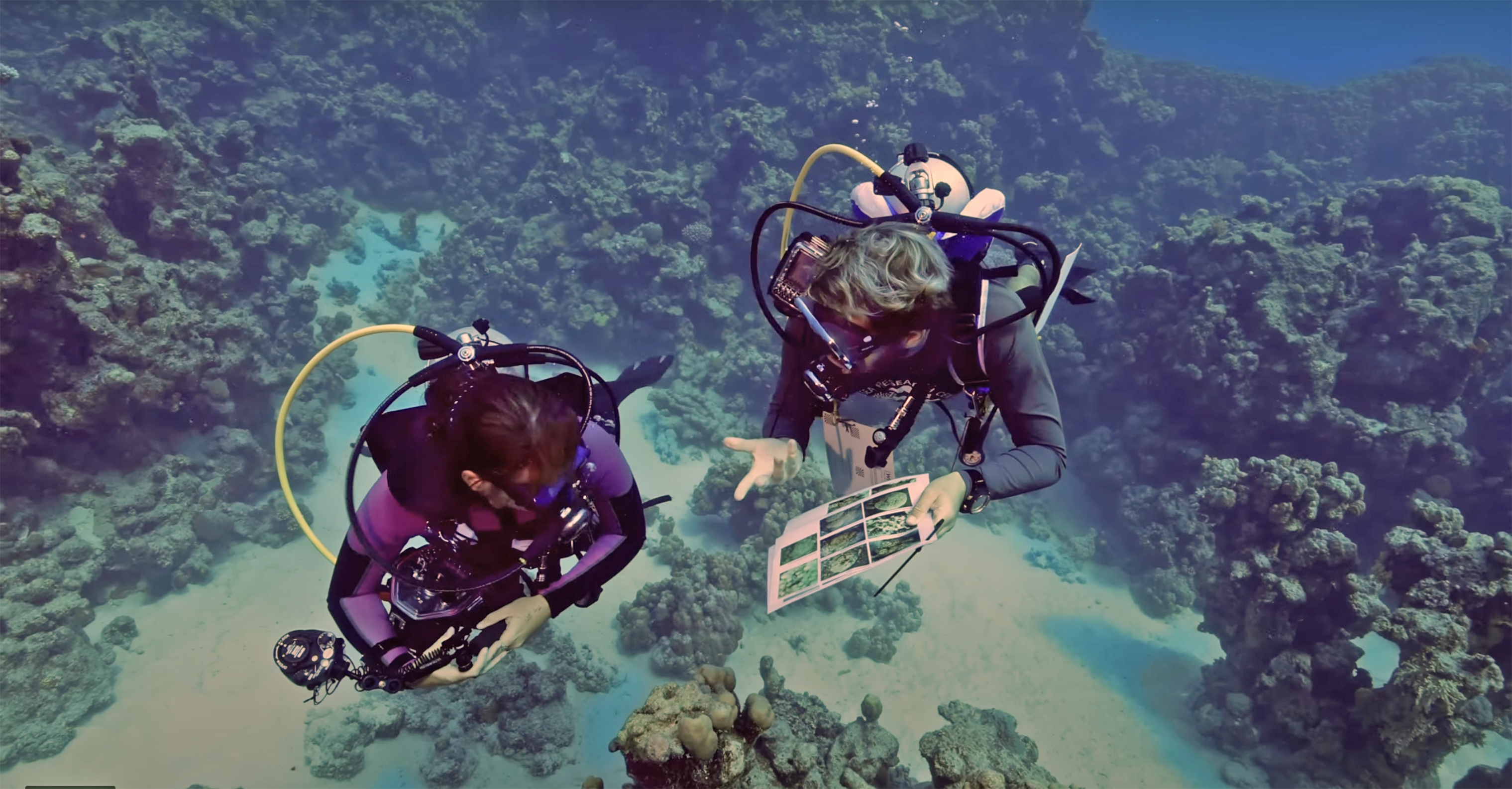
Professional cameras are among a suite of non-invasive tools used by marine scientists to document and identify marine life, used here by participants in the 2021 KAUST Coral Training Workshop to photograph coral species in the Red Sea. Photo: KAUST
In order to understand and protect the vulnerable marine resources of the Red Sea, it is imperative to know which species need protecting.
Coral biologist Dr. Francesca Benzoni, associate director of the Red Sea Research Center at King Abdullah University of Science and Technology (KAUST), hosted a coral training workshop in October for marine science students and non-KAUST faculty and professionals to better identify coral species of the Red Sea.
With one part instruction in the sea and the other in the classroom, the training was not your typical classroom drill. Its purpose was two-fold; the first, fundamental — to learn a story about marine life evolution that’s not found anywhere else in the world; the second, applied — to use this knowledge for marine conservation. Located on the shores of the Red Sea north of Jeddah, and with high-caliber faculty and facilities across disciplines, KAUST provides a pipeline of expertise for addressing pressing environmental challenges in Saudi Arabia and around the world.
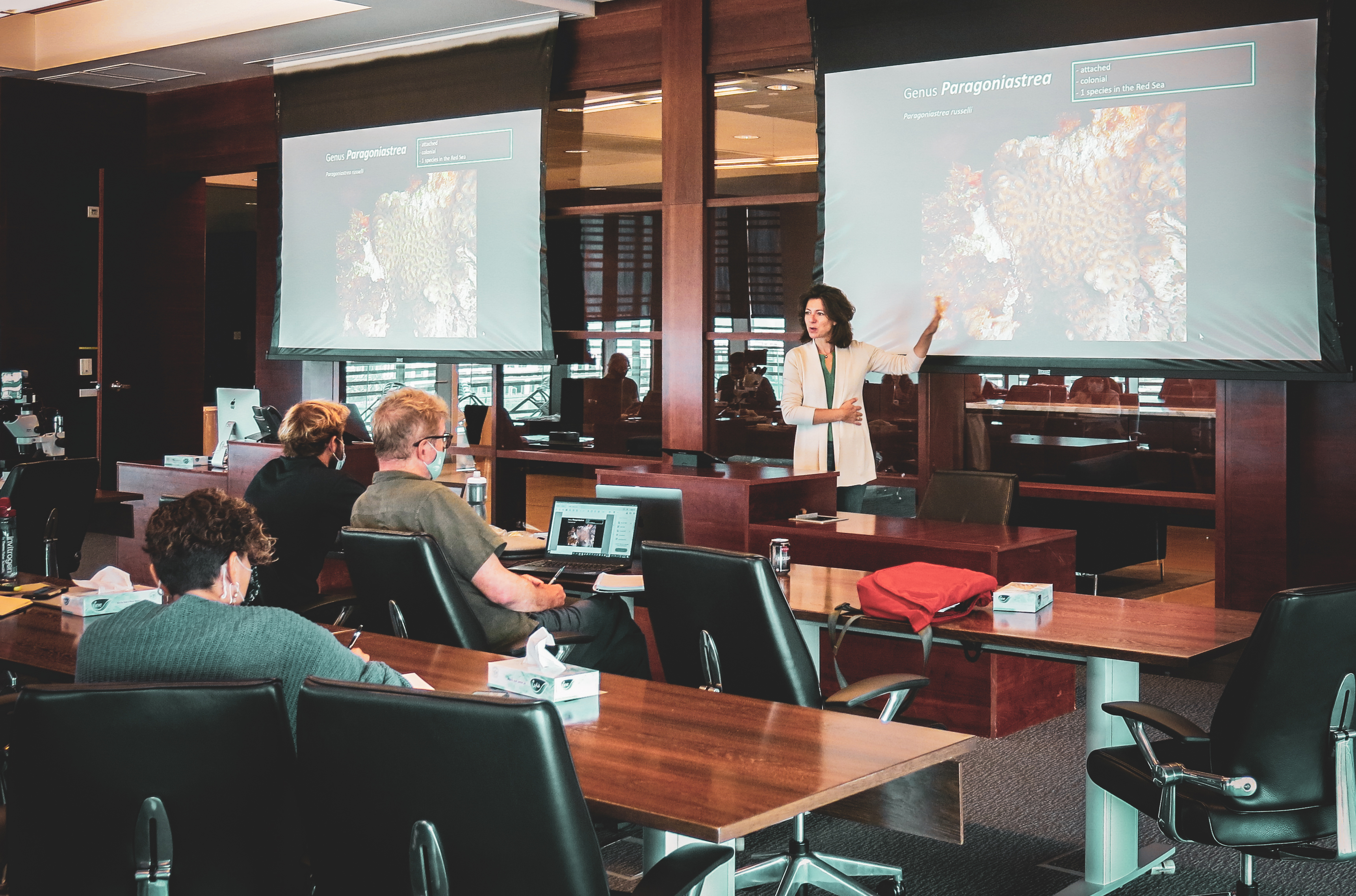
Associate Director of the KAUST Red Sea Research Center Dr. Francesca Benzoni led the 2021 KAUST Coral Training Workshop to help marine scientists better identify the morphological and genetic traits of species unique to the Red Sea. Photo: KAUST
Workshop participants included international specialists from NEOM and The Red Sea Development Company (TRSDC) hired to monitor and enhance the sea’s coral reefs. The Saudi Public Investment Fund-owned organizations are at the center of the Kingdom’s 2030 mission to stimulate innovation, tourism and the economy along the Red Sea coast of the country, while also protecting its unique natural resources. With around 25 endemic coral species found in the Red Sea and nowhere else in the world, the reefs are a key resource of focus for both tourism and protection. In this light, the Kingdom’s plan is bold and proactive, both for the economy and the environment.
Coral reef expertise
Considered to be the world’s leading authority on Red Sea corals, Benzoni has worked for 20 years in the region as a scientist and consultant on different aspects of coral reef ecology and biodiversity, with specific expertise in coral taxonomy. She conceived the workshop to address a knowledge gap about Red Sea coral species.
“These amazing colleagues come to Saudi Arabia, many from different parts of the Pacific, yet have never seen firsthand the endemic coral species that live in the Red Sea. It’s easy to confuse them with corals from, say, Hawaii or Australia or other places where they’ve worked. Although they may look familiar, these Red Sea species are the outcome of very different evolutionary processes.”
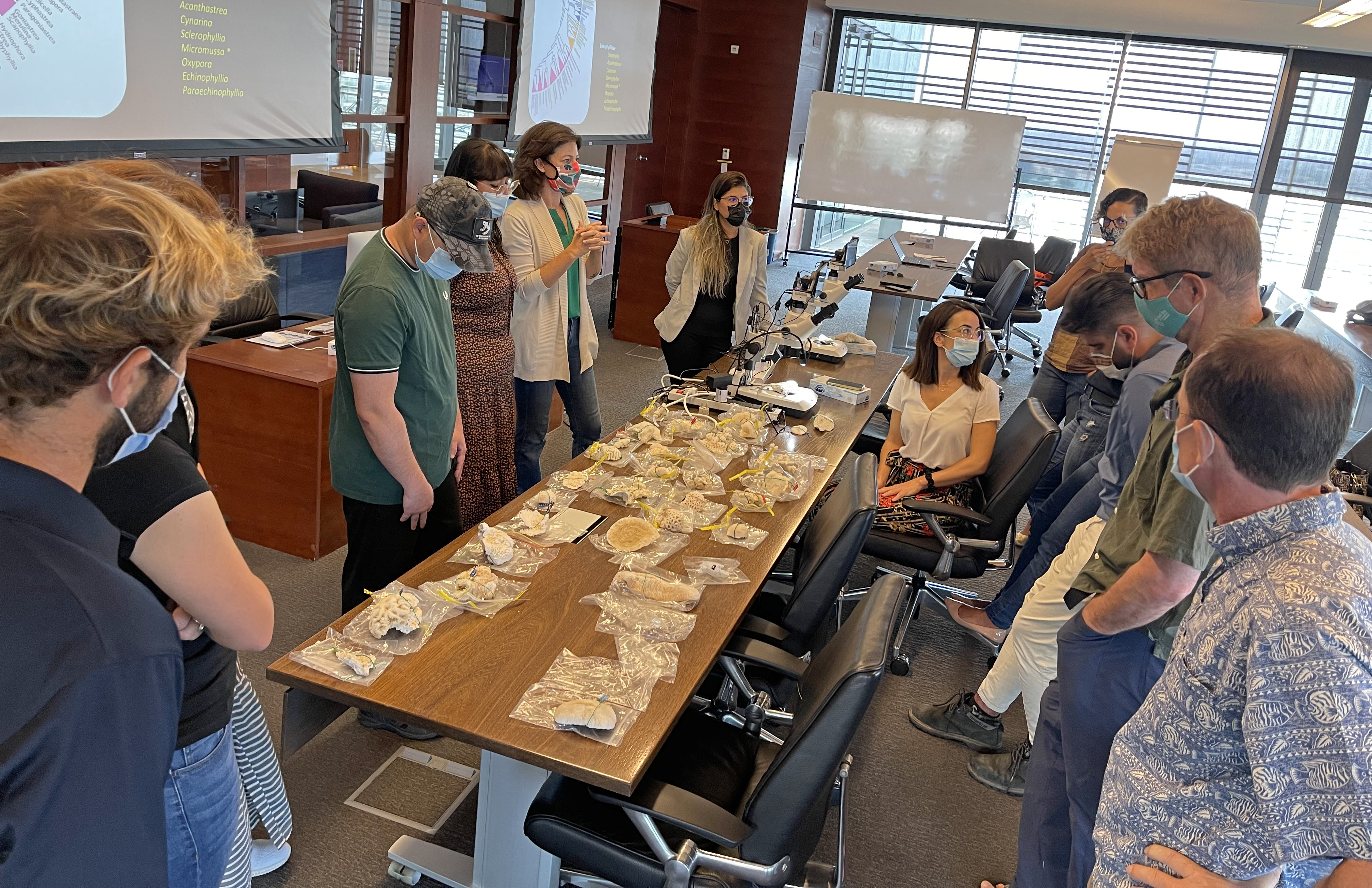
Participants in the 2021 KAUST Coral Training Workshop, led by Associate Director of the KAUST Red Sea Research Center Dr. Francesca Benzoni, viewed coral skeletons to differentiate morphological and genetic traits of species unique to the Red Sea. Photo: KAUST
Because the scientists are tasked with gathering accurate data of impact to both coral reefs and development projects, she said it’s important that they learn the signature features of the corals and indicators of reef health and biodiversity. By this, she said the goal “is not to give a crash course in taxonomy or show a catalogue of species,” but practical tips on how to identify coral animals alive on the reef through a combination of underwater examination, analysis of side-by-side slides, and with the support of microscope and skeletal observations.
“We want the participants to switch on a pattern-recognition system when they get in the water, because corals are not like fish; they are not bilateral with a set color pattern and size,” Benzoni said. “The same coral species can be big or small, and its appearance and coloration variable depending on the depth of the water, light conditions, distribution, and other biological and environmental factors. It takes practice to see these differences, and the Red Sea provides a wonderful setting for these kinds of studies.”
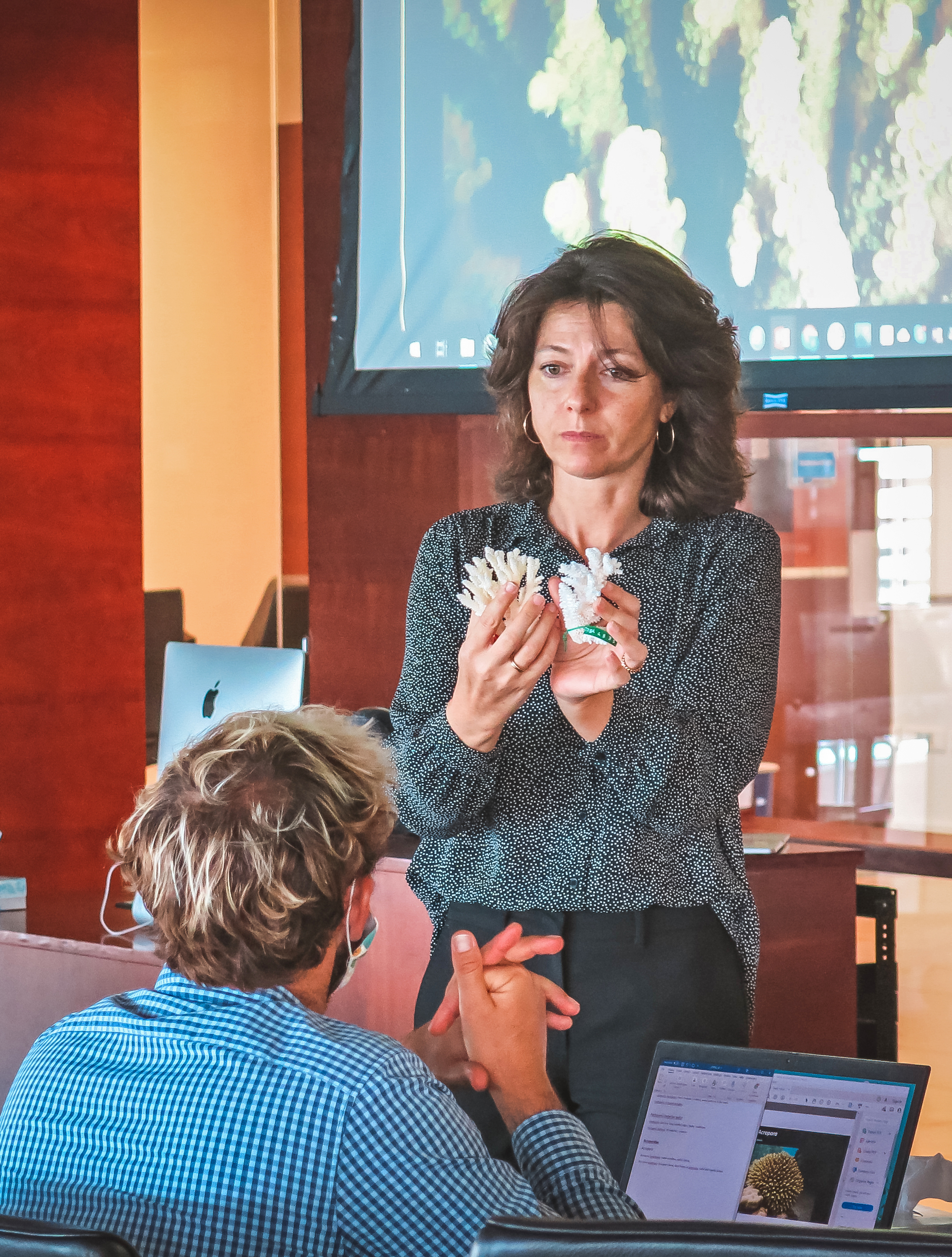
Associate Director of the KAUST Red Sea Research Center Dr. Francesca Benzoni uses side-by-side comparisons of look-alike corals to teach participants subtle yet defining differences between species in the 2021 KAUST Coral Training Workshop. Photo: KAUST
Problem-solving: From the sea to the classroom
In an effort to make pattern recognition fun as well as instructive, Benzoni, together with Dr. Tullia Isotta Terraneo, a postdoctoral researcher and KAUST alumna, organized the diving events around two themes: 1) “Hunt your nightmares,” where participants photographed the corals they found to be most difficult to identify, and 2) “Hunt your endemics,” where they photographed as many endemic species as they could find on the reef.
In the classroom, participants shared information for feedback and problem-solving. Benzoni said the training supports many of the Vision 2030 coastal planning objectives. For example, recreational diving operations involve people, boat activity and anchoring on the reefs. Knowing in advance whether or not a particular reef is highly biodiverse or if it hosts a number of endemic coral species can inform the tourism strategy.
Coral reef ecologist and fish biologist Dr. Ivor Williams was among the participants who had never worked in the Red Sea before. Formerly affiliated with the National Oceanic and Atmospheric Administration (NOAA) Pacific Reef Assessment and Monitoring Program, he now leads the coral reef surveys for The Red Sea Development Company, with projects located along the western coast of Saudi Arabia north of Umluj. He said that the corals of the Red Sea are different from those anywhere else in the world, and the marine environment here is also very different from the Pacific Ocean where he’s worked before, and, consequently, the work is quite challenging. He sees the coral training workshop as foundational to learning new coral species.
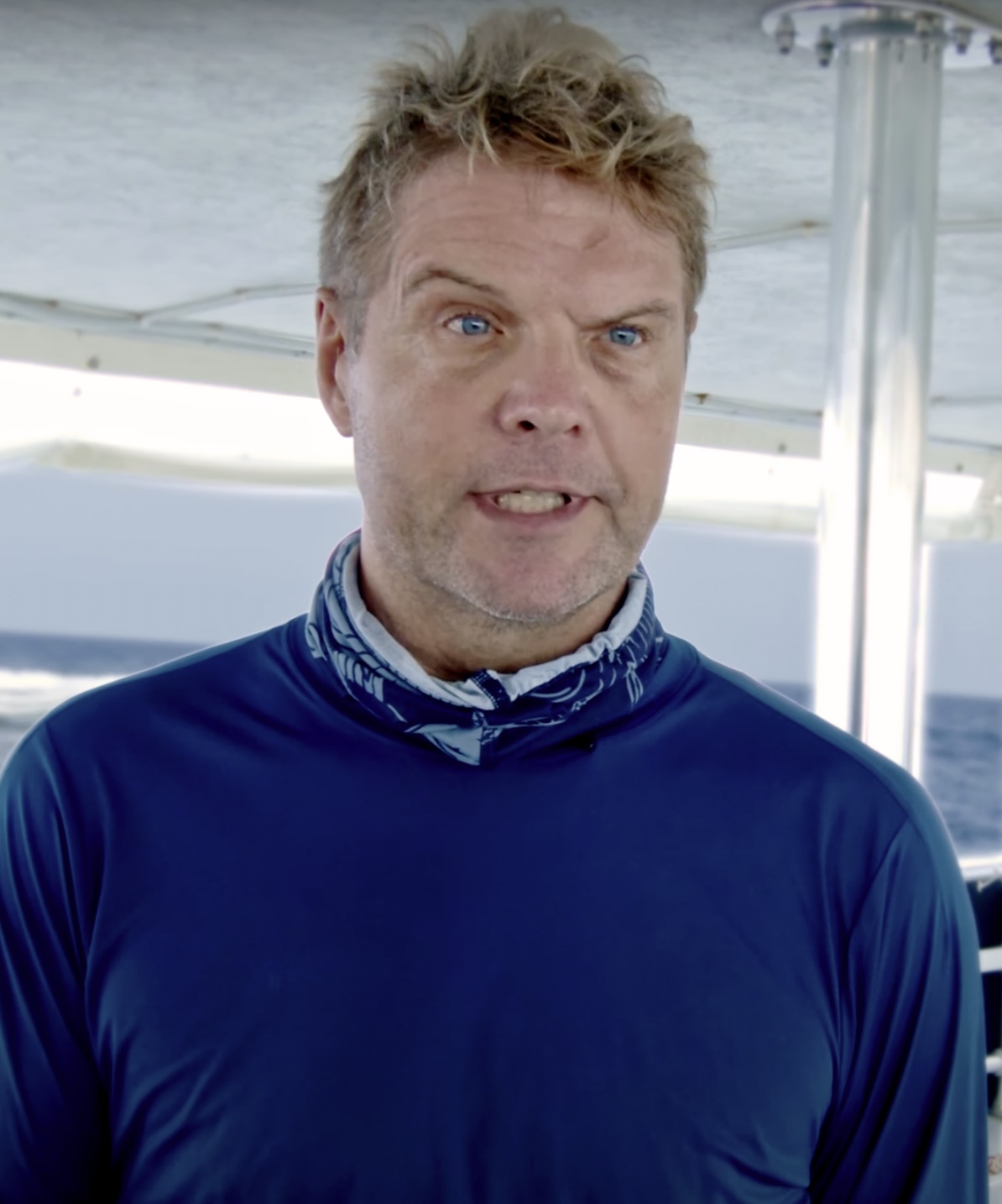
Coral reef ecologist and fish biologist Dr. Ivor Williams participated in the 2021 KAUST Coral Training Workshop on behalf of The Red Sea Development Company; shown here on a boat in the Red Sea, Saudi Arabia. Photo: KAUST
“The job of my science team is to give people good information that they can use to make informed choices, so it’s critical that we know our corals well,” said Williams. “The lagoon where I work is massive and with considerable habitat variability in terms of temperature, depth, and sedimentation. We’re building our understanding of what’s there through the surveys — learning the places suitable for protecting corals, and where we can enhance conditions for them to grow and thrive. The KAUST workshop moves us a step closer to being good at what we do.”
A challenge and also surprise for Williams and other workshop participants was discovering that many of the corals that looked similar in morphology, or form, were very different genetically. They tested their underwater knowledge of coral characteristics against classroom analysis of “look-alike” corals in side-by-side PowerPoint comparisons, together with hands on inspection of coral skeletons and microscope views of their skeletal structures.
Coral biologist and expert Dr. Zac Forsman, also with The Red Sea Development Company, echoed Williams’ words. “The coral training workshop has been incredible. We’re really lucky to absorb as much as we can from Francesca and KAUST experts who know about these coral species, each with a unique history and ecological niche.” He added that Benzoni has been highly instrumental toward resolving differences in coral research by finding important links between morphology, ecology and genetics.
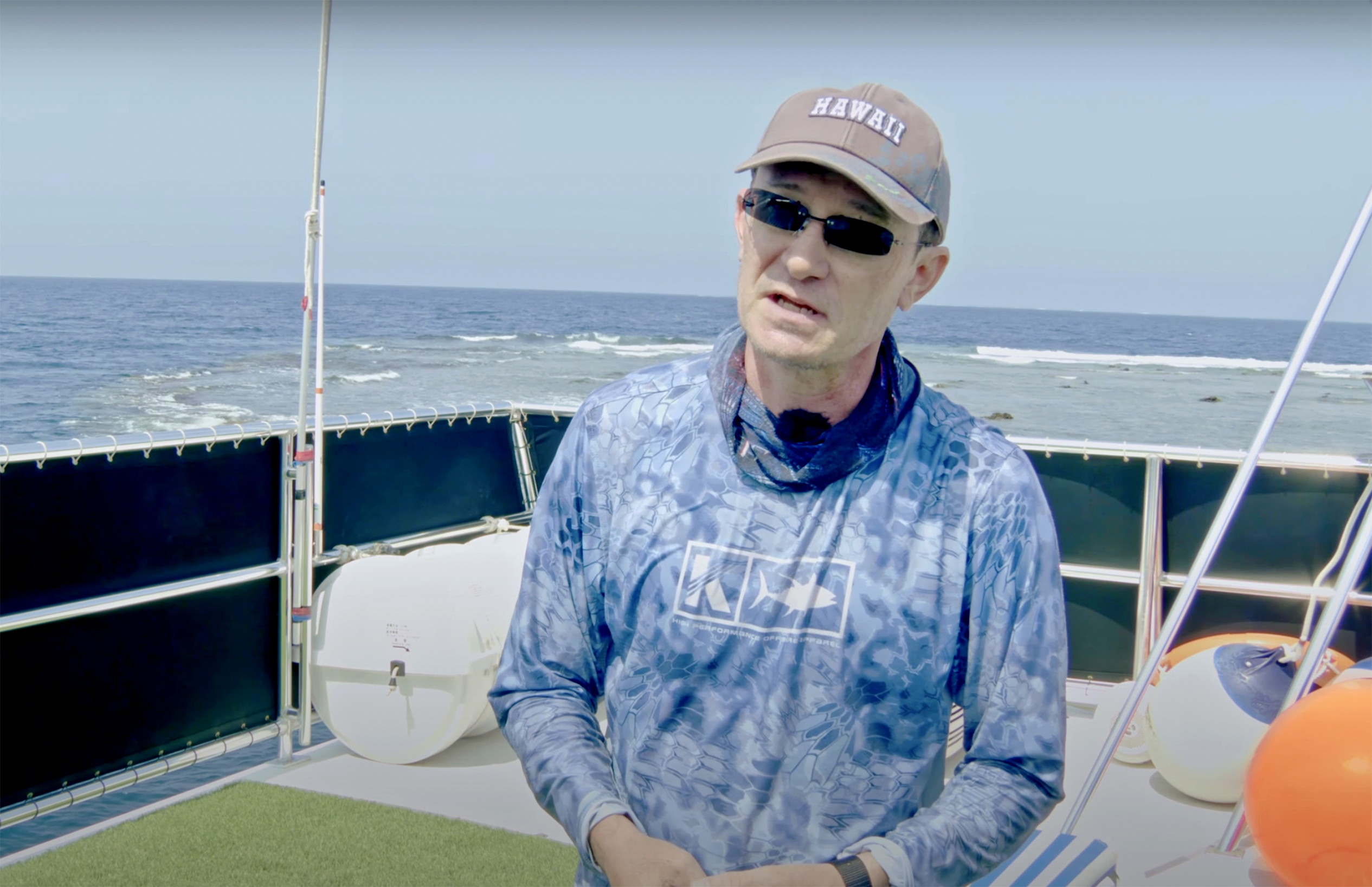
Coral biologist and expert Dr. Zac Forsman participated in the 2021 KAUST Coral Training Workshop on behalf of The Red Sea Development Company; shown here on a boat in the Red Sea, Saudi Arabia. Photo: KAUST
Forsman brings years of experience to his new job from research projects in the Pacific Ocean at the Hawai’i Institute of Marine Biology, where he worked for more than 15 years. His expertise in coral genomics and ecology led to the discovery of micro fragmentation, a technique for rapidly growing corals, and development of floating coral nurseries, which are like ocean greenhouses for farming corals. He said the methods are promising for seeding, growing and restoring corals, including endangered species, and will be used to create TRSDC’s coral garden, relocate corals from construction zones, and in other projects as needed.
“How do you go from a bare substrate to a thriving coral reef?” he asked. “We are thinking in terms of a process called ecological succession, where we phase shift the process by seeding a barren substrate with a fast-growing species of coral that’s easy to scale. Gradually over time, more and more species recruit to the ecosystem, like crabs, sponges and fish, and it will get more and more complex until it becomes this incredibly biodiverse community.”
Forsman is recognized by colleagues around the world for his involvement in similar projects. With the Red Sea Project’s emphasis on zero net impact, Forsman added that the great thing about the floating nurseries it is that you can “do manipulations without harming the natural reef.”
Technological tools for conservation
Benzoni spoke about three key ways in which technology is revolutionizing marine conservation, both in terms of doing no harm and the successful identification of coral species. She said the first is the availability of sophisticated digital cameras for producing highly detailed underwater imagery. The second is access to big data in the areas of genetics and genomics. The third is the scanning electron microscope for producing very fine scale images of coral skeletons. “The integration of these three lines of evidence provides an integrative model of identification, and without the destructive sampling of living corals.”
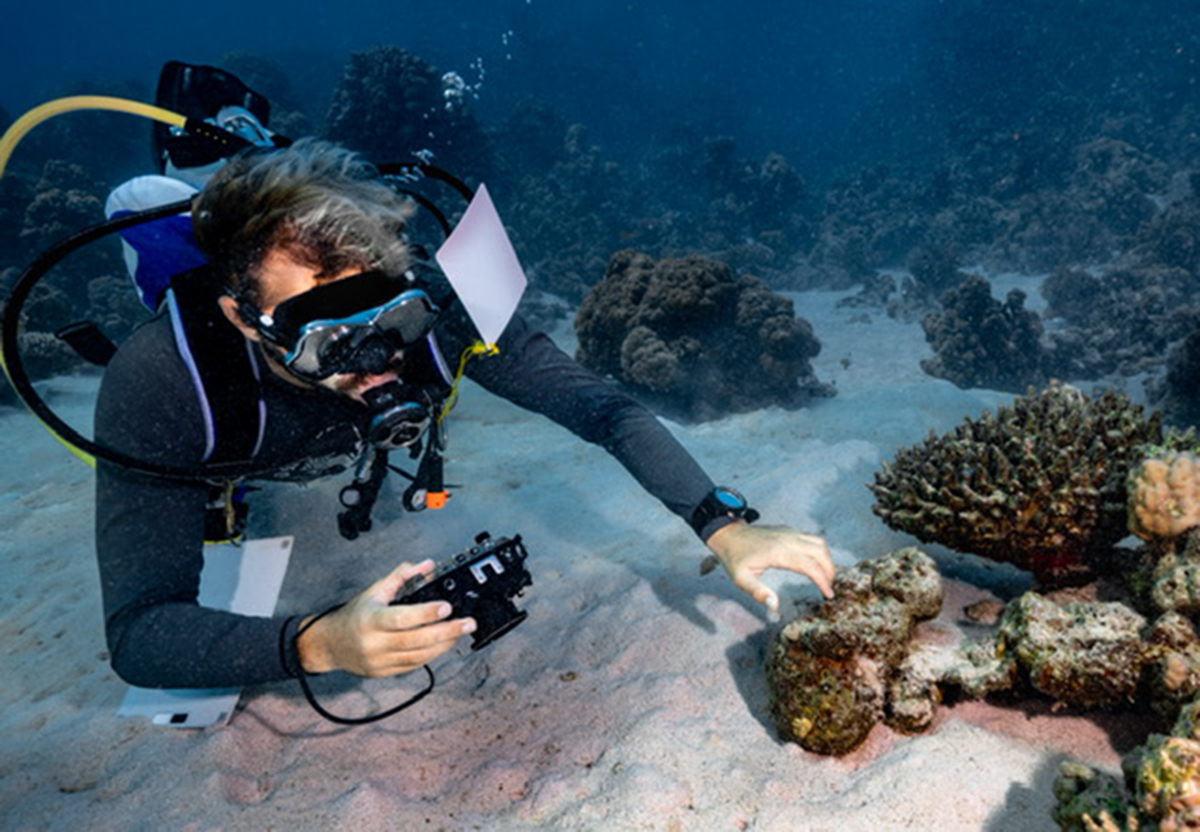
Participants in the 2021 KAUST Coral Training Workshop photograph coral species in the Red Sea; professional cameras are among a suite of non-invasive tools used by marine scientists to document and identify marine life. Photo: KAUST
Dr. Rhonda Suka, another workshop participant with The Red Sea Development Company and who worked with Williams at NOAA, talked about how she uses technology in her job as a benthic surveying science manager. Her expertise is using photographic data called Structure from Motion (SfM) to map the sea floor. For this she takes a series of photographs underwater, which she runs through software to create a high-resolution, three-dimensional model. She said this approach can be used in tandem with other hi-tech tools, such as Mulitbeam SONAR, a remote sensing method that uses pulsed sound to measure and create three-dimensional maps of a surface.
“The SfM models are important for understanding the reef structure and how it’s changing,” she said. “It is different from SONAR because, with SfM you can see in detail what’s specifically making up the shapes on the sea floor. SONAR produces a 3D image composed of what looks like dots of sand over a 3D shape or surface. SfM does the same by triangulating points visible in sequential overlapping images to calculate the precise location of each point. The resulting model also has the photographic data so that you can determine what each specific dot is, whether a coral, rock or something else.”
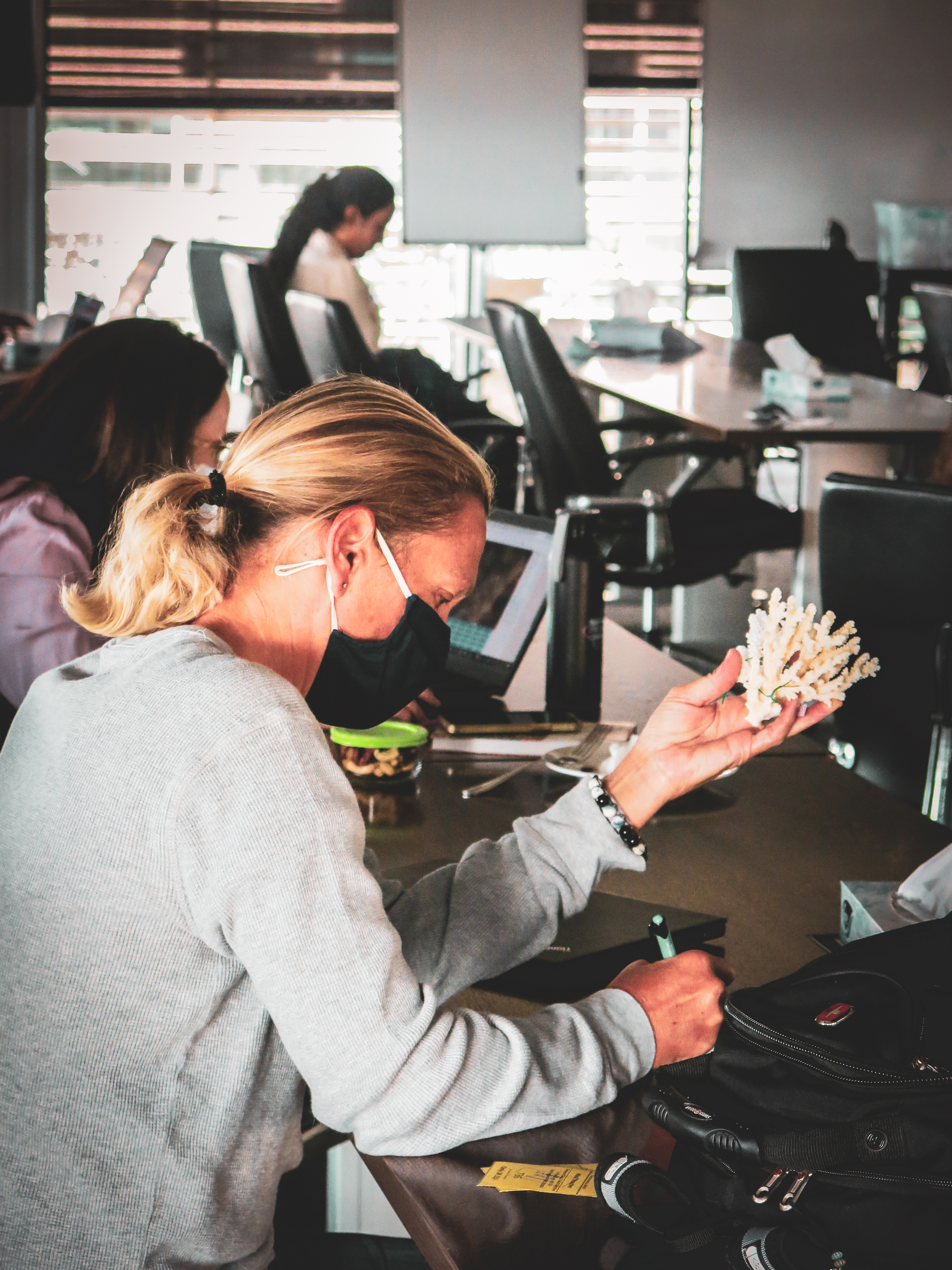
Dr. Rhonda Suka, a benthic surveying science manager with The Red Sea Development Company, examines a coral skeleton as part of the 2021 KAUST Coral Training Workshop. Photo: KAUST
Such views provide important baseline information that scientists use to advise projects, from design to development, and assess how an area might change over time. “For example, constructing a jetty could change coastal runoff or the sea’s currents, which, in turn, could affect the water circulation that reaches coral communities. Maps are tools for understanding the environment with as minimal impact to the environment as possible and are a powerful tool to communicate conservation needs to non-scientists.”
For Benzoni, the opportunity to help problem-solve some of the pressing coral reef challenges of our day alongside other experts now working in-Kingdom is an exciting challenge and responsibility — one that starts with knowing about the species that live in the Red Sea.
“The Red Sea is a well-known tourism destination, but it’s still relatively poorly known in terms of marine life. I want to know about the species that live here and nowhere else in the world. Why are they here? Where do they live? How did they evolve and adapt so well to live here? This to me is a very interesting question. KAUST is a primary conduit for answering these questions and transferring this knowledge. It is a place where you can do this kind of research with the best support possible and in collaboration with an amazing team of colleagues and students.”
She said that learning the answers to these questions will be a starting point for scientists to understand related questions about the evolution of marine life in the wider Indo-Pacific region. “The pieces of the puzzle are slowly coming together, and the more we look, the more we find,” she said. “The next generation of young scientists interested in these fundamental questions will tackle them with new approaches, and apply what they know to make a difference in conservation.”
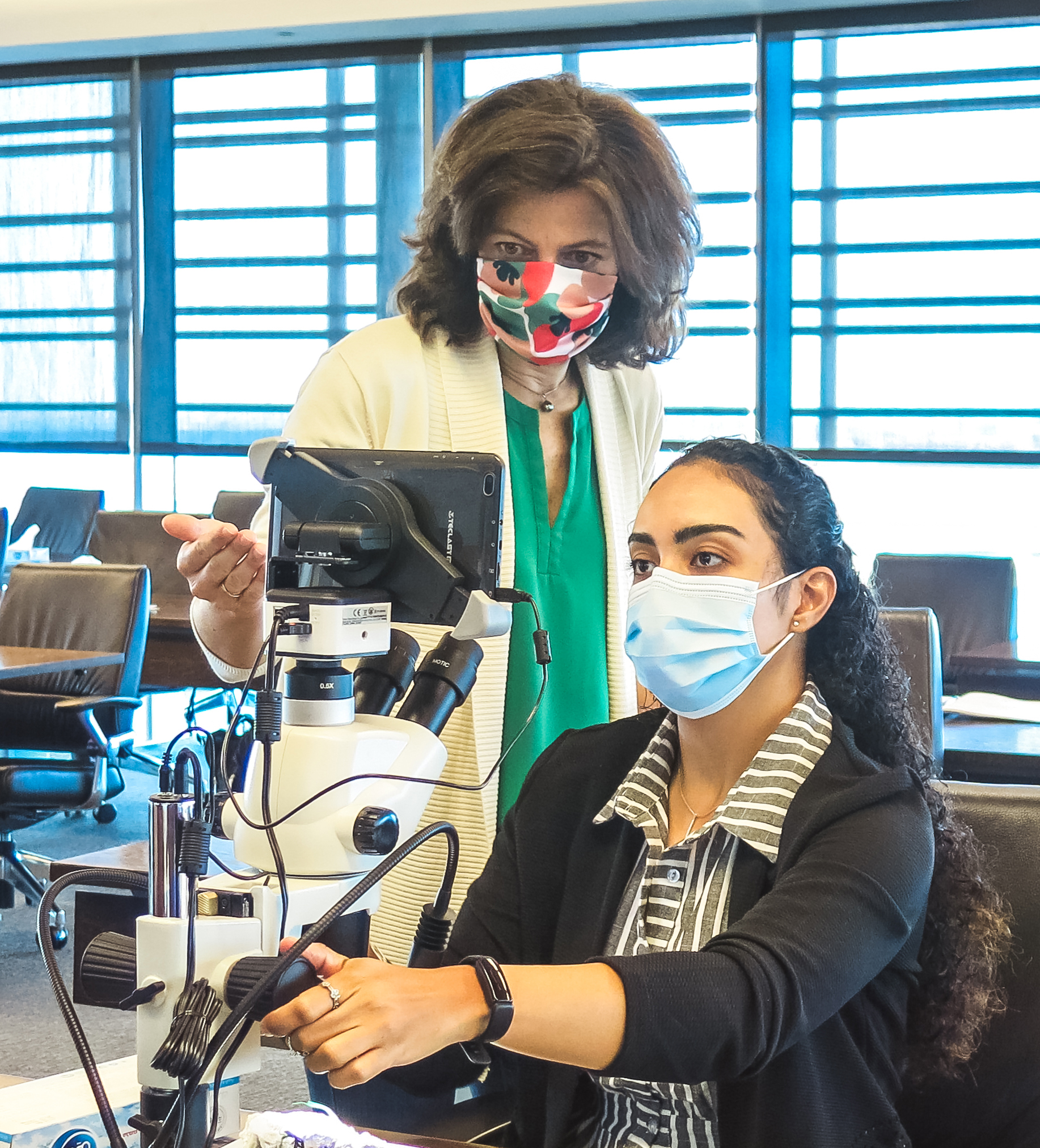
Enjey Ghazzawi, marine conservation analyst at NEOM and KAUST alumna, participated in the 2021 KAUST Coral Training Workshop; shown here at the microscope (foreground) analyzing the skeletal structure of a coral with the help of Dr. Francesca Benzoni, associate director of the KAUST Red Sea Research Center.
A KAUST coral field guide, currently in development, will help toward this goal. Dr. Benzoni and her team expect the guide to be published in 2022.
Environmental connections beyond the reef
As a boy, Mishari AlGhrair grew up with a love for nature. He had his own garden with many animals and birds, and his family encouraged him to care for them. Now a senior specialist of monitoring and compliance with NEOM, headquartered in northwestern Saudia Arabia, he said his job is his great passion. “I feel that my country is doing something really important, and I am proud to be a part of it,” he said.
AlGhrair looks at human disturbances to coastal environments and is tasked with developing guidelines to minimize impact. His baseline surveys focus on Saudi Arabia’s shore and sea birds like terns, falcons and osprey, with the goal of minimizing impact to the habitats where they breed and nest. He explained that there are tight connections between the corals and seafaring birds that land on the reefs that are beneficial to both bird and coral species, but that this is still an understudied area. “Learning about corals and reef ecosystems at the coral training workshop provided important information that will help me better advise and do my job. I would like to thank KAUST for the opportunity to participate.”
His job underscores that it is these greater environmental connections that NEOM and TRSDC seek to understand and protect.
“The amazing thing about our project is that our leaders have designated 95% of NEOM as a protected area. Development can only be in 5% of the area,” he said. “This is an important goal for the Kingdom that will help offset climate change and other environmental issues, serving as a model for other countries. It’s an ambitious target and an international effort, but we will achieve it, insh’Allah.”
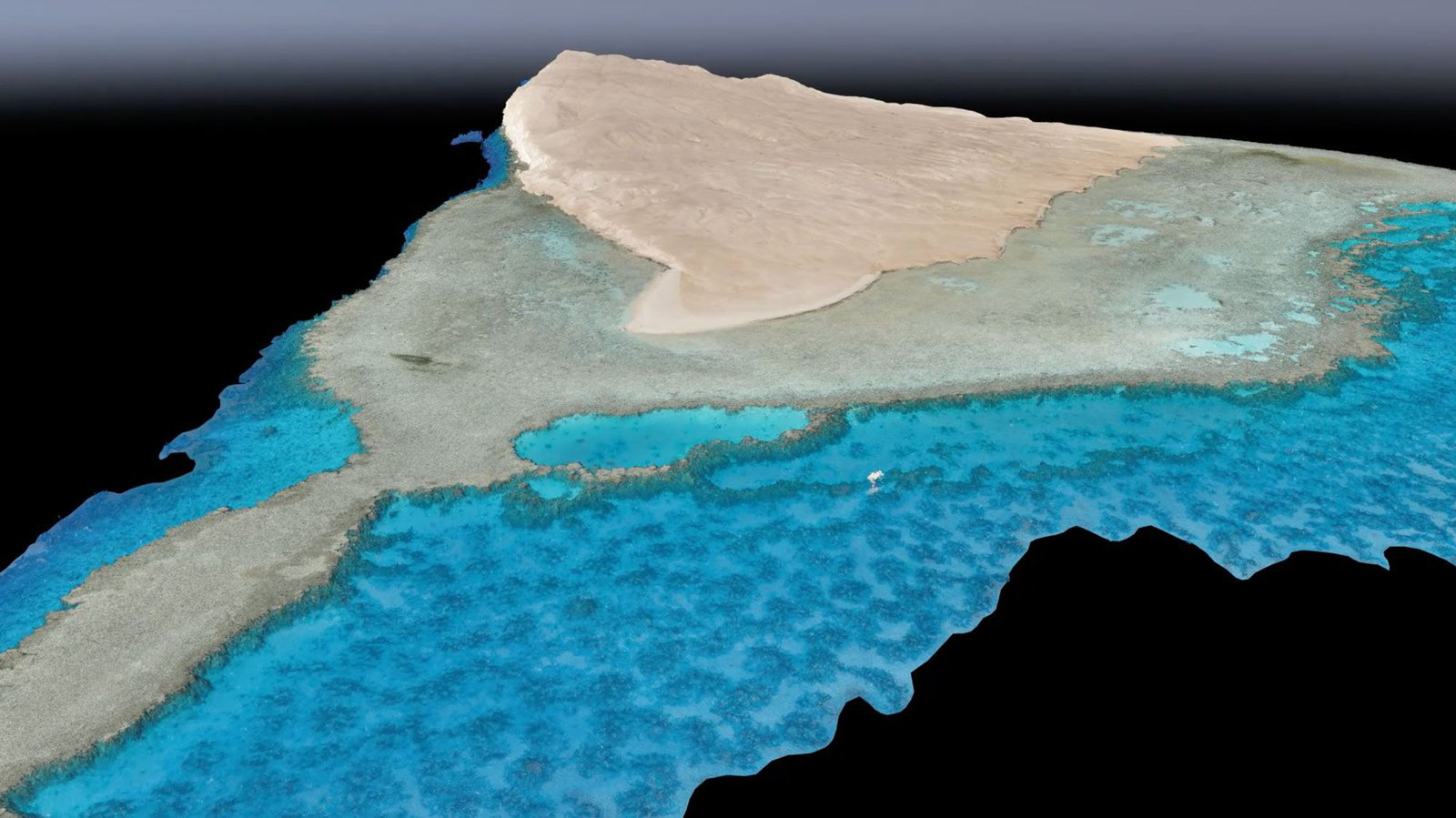
Aerial view of Shousha Island at NEOM, where NEOM and KAUST will build a coral reefscape in the Red Sea in northwestern Saudia Arabia. Photo courtesy of NEOM.
Related links
-
Neom and KAUST partner on coral garden
- KAUST secures expertise from The Red Sea Development Company
- Scientists propose a nature-based adaptive approach to boost coral restoration

